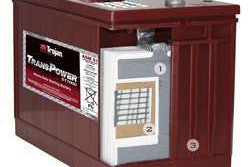Click here to see all of CCJ’s coverage of TMC news.
The North American Council for Freight Efficiency (NACFE) has published its newest Confidence Report.
This report focuses on optimization of engine parameters to maximize fuel economy, and has determined that fleets that optimize their electronic engine parameters for fuel economy can expect to see about a 0.5 MPG improvement in fuel economy. NACFE also says fuel economy improvements of 5 to 8 percent are possible for fleets that previously have not used parameters to optimize for fuel economy.
Much like users of common electronic devices such as smartphones and televisions, NACFE’s research has determined fleets set only a fraction of the electronic engine parameters that can be used.
According to the report, engine parameters add no weight or cost, and don’t require any additional maintenance; they are already an integral part of the engine control software. These benefits make engine parameters unique among efficiency technologies, and contributed to the study team’s high confidence rating.
“Optimizing engine parameters is well worth the effort—it enhances fuel economy and saves fleets a lot of money. But the complexity of optimization is preventing many fleets from enjoying the benefits,” says Dave Schaller, NACFE program manager.
The Confidence Report focuses on six engine parameter categories: vehicle speeds, vehicle configuration information, engine speed and torque limits, idle reduction, driver rewards and miscellaneous MPG-related features.
The report also offers insights and best practices to deal with the obstacles to programming and maintaining parameter settings, NACFE says. And it contains fleet and dealer perspectives on setting and using electronic engine parameters, a summary of service tools available from engine manufacturers, and a parameter names comparison chart.










